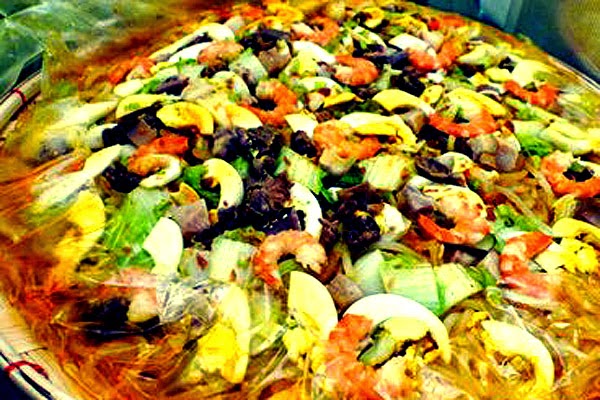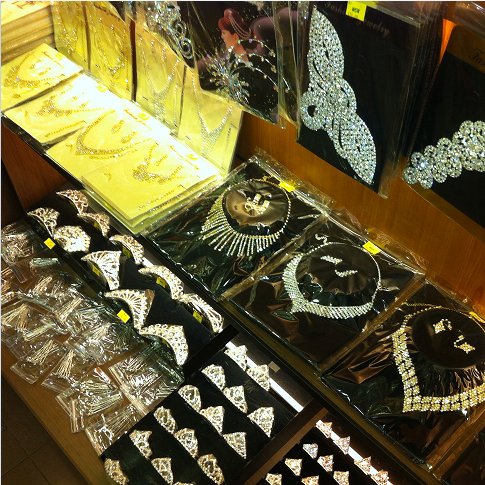MANILA
Roxas Boulevard Baywalk
Foreign
and local tourists wishing a whiff of sea breeze may promenade between the Manila Bay
seawall and numerous al fresco restaurants. It is a strategic spot to view the
world famous Manila
Bay sunset whose
inimitable vibrant colors continue to be accentuated in the evening by the
colorful street lights stretched along the entire 2 kilometer promenade.
Malacañang
Palace / Museum
Malacañang Palace is considered to be one of the most historic
structures in the Philippines.
It has been the official residence of the highest chief executive of the
country since 1863. Located next to the Pasig River, it served as a
summer residence for the Spanish governor-general during the early 1800’s.
Governor General Rafael de Echague
moved the seat of government to Malacañang
Palace after an
earthquake devastated the Palacio del Gobernador in Intramuros. Since then, it
has been witness to the numerous challenges that have faced the nation and the
events that have defined our history. A wing of the palace is open to the
public as a Philippine Presidential Museum. The palace tour focuses on all former
Presidents of the Philippines
and an exhibit are presidential memorabilia highlighting the terms of office of
the country’s former chief executives.
Manila
Zoological Garden
The
Manila Zoo shelters a collection of Philippine and exotic African wildlife.
Among the varieties of animals and birds found here are the endangered
Philippine Tamaraw and the Tarsier, both indigenous to the Philippines.
Intramuros
Intramuros,
meaning “within the walls”, was the glorious old city of Manila. Originally the native settlement of
Moslems ruled by Rajah Sulayman, it
became an encircled city of massive high stone walls, bulwarks and moats with
the arrival of Miguel Lopez de Legaspi in 1521. Within the walls of 4.5 kms.
Encircling an area of 64 ha. rose residences, churches, schools and government
buildings with drawbridges as gates which closed before midnight opened at the
political, cultural, educational, religious and commercial realm of Spain in the
East.
CALOOCAN
Bonifacio Monument
Bonifacio Circle Monumento, Caloocan City
The
main landmark of the city, the Bonifacio
Monument is located at
the intersection of Rizal Avenue
& EDSA. The monument commemorates the most proletarian of all Filipino
heroes, Gat Andres Bonifacio. The monument was immortalized by a great Filipino
national artist for sculpture, Guillermo Tolentino.
San
Roque Cathedral
A.
Mabini, Caloocan City
The
first Catholic Church in Caloocan
City. On June 28, 2003,
his holiness John Paul II created the new Diocese of Caloocan, comprising Caloocan City - South, Malabon City
& the Municipality of Navotas & elevated this Parish
Church to the level & dignity of a
Cathedral Church. The Holy Father appointed the
most Rev. Deogracias S. Iñiguez, Jr.
D.D. as the first Bishop of the New Diocese of Caloocan on August 22, 2003.
MALABON
Balsa
sa Niugan
Started
in July 1998, Balsa sa Niugan is owned by Mr. Santy Geronimo, a native from
Niugan, balsa has 350 seating capacity, a native inspired place with 43
workers. It has a total land area of 5,000 sq. meters, in both land and water. Located
at the heart of Malabon, Balsa was originally a fishpond converted into a
floating restaurant and a fishing garden. Its natural landscape, fishing and
open dining facilities make it a pleasurable place for guests to dine.
Angel
C. Cacnio’s Art Gallery
Depository of paintings and sculptures done by the noted
members of the Sining Tambobong Foundation. Contemporary and Modern Malabon
painters and sculptors are members of this Foundation. Their works are
displayed in both national and international art exhibitions.
Dr.
Jose P. Rizal Monument
This
monument has been in its present location for decades. Its base used to be
around seven feet tall. But due to the continued rising of the sea level that
resulted in constant flooding, the ground had to be constantly raised. That
explains the current short base of this monument.
NAVOTAS
Navotas Fishery Port
Manila Bay provides Navotas with bountiful source of
fish and other marine products, which constitute the basic diet of the town’s
residents. Navotas, home to low marginal fisherman and big time trawlers, own
the most modern sophisticated fishing boats dominating the fishing ground of
the country today. Marketing of the catch is done in a modern market complex
known as Navotas Fishery
Port, premiere fish center of the Philippines with an area of 47.5 hectares and
one of the largest in Asia under the
supervision of PFDA (Philippine Fisheries Development Authority). It is a
traditional landing place of commercial fishing boats operating in various
fishing grounds in the Philippines situated on a 47.5-hectare reclaimed land at
the Northeastern section of Manila
Bay. Within the complex
is a thriving fishing industry, supplying fish in major markets of Metro
manila. Thousands of buyers visit the
port daily where an estimated 20 commercial fishing vessels call port and
unload a total volume of about 800 tons.
Overland vehicles from different provinces also bring in addition,
another volume of 50 tons. Outside the
complex is a business center with banks,
markets, restaurants, and recreational facilities.
Dry-Docking
Facilities
Though
Navotas is not gifted with vast areas of lands filled with attractions,
it is home to almost
all vessels in the archipelago
with its many dry docking facilities along the riverside which can accommodate
any type of vessel from fishing boats, passenger vessels, cargo vessels, towing
vessels to barges. Dry docking facilities available are as follows:
VALENZUELA
San
Diego de Alcala Church
Bgy.
Poblacion
The
San Diego de Alcala Parish at Barangay Poblacion, the center of the old town of
Polo, was the
first Parish on the City. The ruins of the church, while not as old as the
parish, is a reminder of the 376 year-history of the town, now the City of Valenzuela.
Museo
Valenzuela
Pag-asa
Subd. I Bgy. Marulas
Built
to serve as a historical and cultural site, as well as a place for cultural and
historical exhibits and performances. It also serves as a starting point for
tourism and pilgrimage visitation to the City of Valenzuela.
Church of San Roque
Bgy.
Mabolo
Seat
of the San Roque Festival which
dates back to the 17th century. Street dancing is held every 12th day of May.
QUEZON CITY
Quezon
Memorial Shrine
The
tallest structure in the city, piercing 66 meters to the sky, is a fitting
tribute to the founder of Quezon City
and one of the country’s greatest statesmen – President Manuel Luis Quezon. The
monument, built in the center of the 27-hectare rotunda park, also boasts oftwo
museums – one housing priceless Quezonian items and the other memorabilia of Quezon City mayors. The
tomb containing the remains of this great man are laid to rest in a bronze
casket and marble niche inside the Shrine.
Quezon Memorial
Circle
A
26 hectare circular park located in front of the Quezon City Hall
Building encircled by
elliptical roads. Considered one of the
country’s premier landmarks, the site is a symbol of the people’s gratitude for
the First President of the Philippine Commonwealth and for whom Quezon City is named
after. It is the spot marked out by President Quezon as the converging point of
the principal government offices.
Araneta
Coliseum
The
world’s largest covered dome (in the 60’s) which towers 220 feet with a seating
capacity of 36,000. It has a total land area of 185,000 sq. ft. and a diameter
of 367 feet. The coliseum has staged various shows from the moment it captured
the Philippines’
first post-war world boxing title by the legendary Gabriel “Flash” Elorde. It
also presented the classic “Fight of a Lifetime” between Muhammad Ali and Joe
Frasier in 1976. Also worth mentioning are the countless beauty pageants and
basketball tournaments of national and international tones plus local shows
ranging from musical concerts to athletic events.
Our
Lady of EDSA Shrine. It was built
by the grateful Filipino people in honor of the Blessed Virgin Mary for her
protection and guidance during the people power EDSA revolution.
MARIKINA
Marikina River Park
Spurred
by the death of natural resources resulting from the continuous growth in
residential areas, the City of Marikina
took pains in rehabilitating and converting the 220 ha. Marikina River into a sports
and recreational park.
Shoe
Museum
The
former Bigasang Bayan of Marikina,
rehabilitated and converted into a museum. The only shoe repository, existing
in the country, it houses a notable shoe collection to include some 778 pairs
belonging to the former First Lady Imelda R.
Marcos. The museum is a showcase not only of the premier product of Marikina but also of the
industriousness and ingenuity of the Marikeños.
Biggest
Shoe in the World
Displayed
at the Riverbanks Mall gallery, the
biggest shoe in the World is certified by the Guiness Book of World Records measuring 5.29 meters long and 2.37 meters
wide. It is made of genuine leather and took 72 days to finish. The shoe can be
worn by a 125 ft.-tall person fit 30 people inside. The leather material used
can produce 250 regular pairs of shoes.

River
Carabaos
Marikina was considered as
the largest private hacienda in the Philippines during the early years
of Spanish colonization. Its residents were comprised mostly of farmers whose
main crops were rice and vegetables. The town folks had bountiful harvest
enabling each family to own more than two carabaos, even a dozen or so. At the
time, to possess several carabaos served as a symbol of progress for the town
and wealth for the families. From stories and accounts of old owners, the Marikina city government
traced the old carabao trail which was the regular route taken from their
owner's homes to the fields and vice versa. About 28 stone built carabaos were
placed in the path along the riverbanks of Kalumpang serving as an attraction
and as a marker of the once scenic and abundant Marikina farmland.
SAN JUAN
St.
John the Baptist Church
140 Pinaglabanan
Street
San Juan
Built
on 1895, the church is a sanctuary to the 400-year-old image of the town Patron
Saint San Juan Bautista, (St. John the
Baptist) where the town derived its name.
Greenhills
Shopping Center
Ortigas Ave., Greenhills
The
home of the foremost, biggest yet unequalled flea market in the Philippines,
the Greenhills Tiangge, where shoppers experience the exciting bargain buys
almost the whole year through. Christmas holidays however, bring about an
incomparable plenitude of goods and shoppers crowding the vicinity with an
animated Christmas show as an added attraction traditionally showcased at the
COD Department Store in Cubao.
MANDALUYONG
San
Felipe Neri Church
Rev. G. Aglipay St. cor. Boni Avenue
Like
other Catholic churches in the Philippines,
it was run by hostile Spanish friars and almost became the site of bloody
encounters between the Filipino revolutionaries and the Spanish soldiers during
the Revolution of 1896.
EDSA
Shrine
Epifanio
delos Santos Ave.
The
Shrine is a monument to the Virgin Mary, protector of those who bravely risked
their lives during the 1986 People Power Revolution
erected at the very site of the revolution.
Dambana
ng mga Alaala
Built
in memory of the gallant sons and daughters of Mandaluyong.


























%2Band%2BPagkilala%2B(Recognition).JPG)































%2Band%2B(Paglilingkod)%2BService%2Bto%2BPeople.JPG)












